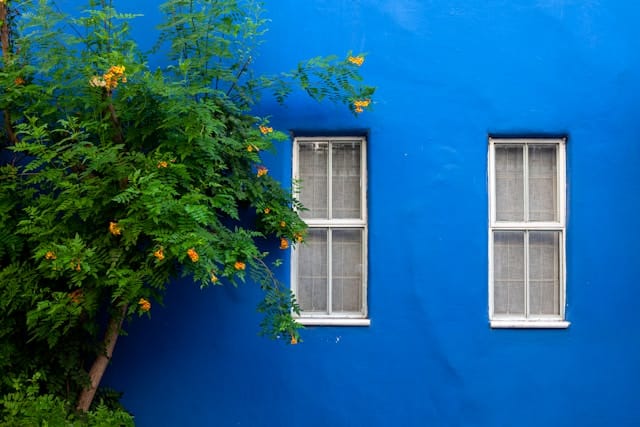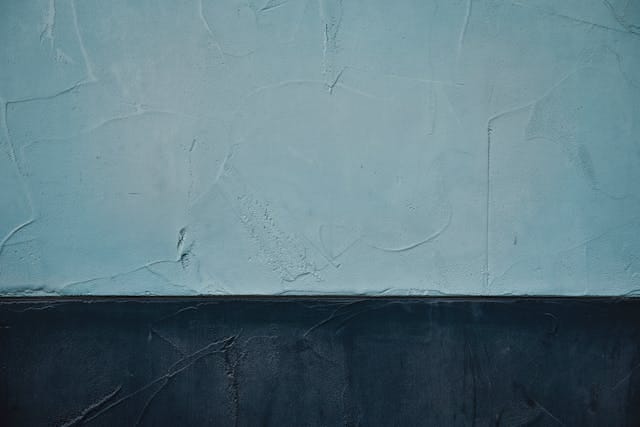
How to Complement Your Landscaping with Exterior Paint Colors
Table of Contents
Key Takeaways
✔ Choosing paint colors that match the home’s architectural style enhances visual harmony and curb appeal.
✔ Coordinating exterior paint colors with natural surroundings creates a balanced and cohesive look.
✔ Using contrasting trim and accent colors highlights architectural details and adds depth.
✔ A neutral base with warm and cool undertones ensures the exterior looks appealing year-round.
✔ Professional exterior painting contractors provide expert color recommendations and precise application for lasting results.
✔ Testing paint colors in different lighting conditions helps prevent color mismatches.
✔ High-quality paints and proper surface preparation improve durability and weather resistance
A beautifully painted home exterior can elevate curb appeal, but the true magic happens when exterior paint colors complement the surrounding landscaping. Professional exterior painting contractors understand how to balance architectural details with natural surroundings, helping homeowners select shades that blend harmoniously with the landscape.
Here are five expert strategies to create a seamless connection between exterior paint and landscaping.
1. Consider the Home’s Architectural Style
The architectural style of a home sets the foundation for exterior paint color choices. Colors that align with the home’s design create a cohesive look and enhance curb appeal. Professional exterior painting contractors can recommend shades that highlight architectural details while blending with landscaping.
How to Match Paint Colors to Architectural Style
- Colonial or Traditional Homes: Neutral shades like white, cream, and soft gray complement the symmetry and balanced lines of colonial-style homes. Darker accent colors on shutters and doors, such as navy blue or forest green, create contrast and add depth without disrupting the classic aesthetic. Professional exterior painting services often suggest satin or semi-gloss finishes for a refined look that stands up to weather conditions.
- Modern or Contemporary Homes: Crisp white, black, and shades of gray reflect the clean lines and minimalist style of modern homes. Bold accent colors like navy, charcoal, or deep green can create a striking contrast that enhances architectural angles and flat surfaces. Residential exterior painters recommend using matte finishes on siding and high-gloss finishes on doors or trim to emphasize depth and texture.
- Craftsman or Bungalow Homes: Earthy tones like deep green, rich brown, and rust reflect the natural materials and warm feel of craftsman-style homes. Muted trim colors like soft beige, olive green, or terracotta help frame architectural details without overwhelming the design. Professional exterior painting contractors suggest using flat or eggshell finishes to maintain the organic, understated look typical of craftsman homes.
2. Coordinate with Natural Surroundings
Landscaping plays a major role in how exterior paint colors are perceived. Colors that reflect or complement natural elements create a harmonious and balanced appearance. Professional exterior painting contractors can suggest shades that work with existing plants, trees, and hardscaping features.
How to Complement Paint Colors with Natural Surroundings:
- Work with the Dominant Greenery: Green is the most common color in landscaping, so exterior paint should either complement or contrast with it. Soft beige, cream, and warm gray blend well with lush green backdrops, while deeper shades like navy or charcoal create a striking contrast against vibrant foliage. Exterior painting services can help homeowners find the right balance between blending in and standing out.
- Highlight Seasonal Colors: Landscaping changes with the seasons, so paint colors should complement these shifts. Earthy tones like terracotta, rust, and deep green work well with autumn foliage, while soft pastels and crisp whites reflect the freshness of spring. Residential exterior painters can recommend versatile shades that look appealing year-round.
- Balance Hardscaping and Paint Colors: Stone, brick, and wood features in patios, walkways, and retaining walls influence how paint colors appear. Warm tones like tan and sandstone work well with brick or natural stone, while cooler grays and blues complement concrete or slate. Professional exterior painting contractors assess hardscaping tones to create a cohesive look.
3. Use Contrast to Create Depth
Contrast helps define architectural features and draws attention to landscaping details. The right combination of light and dark shades can create a sense of depth and sophistication. Experienced residential exterior painters understand how to use contrast without creating visual conflict.
How to Create Effective Contrast
- Pair Light Siding with Dark Trim: Light-colored siding in shades of white, cream, or pale gray gains definition with dark trim in navy, black, or deep green. This combination highlights window frames, rooflines, and eaves, making architectural details more prominent. Exterior painting services often recommend using semi-gloss finishes on trim for added dimension.
- Use Darker Shades at the Base: A darker base color on foundation walls or lower sections of siding grounds the home visually and adds stability. Deep brown, charcoal, or forest green blends well with stone or wood accents while creating a balanced appearance. Exterior painting contractors can advise on the right combination to prevent the home from appearing too top-heavy.
- Highlight Architectural Details: Window frames, shutters, and doors painted in contrasting colors draw the eye and create a focal point. For example, black or navy shutters on white siding create a crisp, polished look. Residential exterior painters recommend limiting contrast to two or three elements to avoid a cluttered appearance.

4. Match Paint Finishes to Landscaping Texture
Paint finishes affect how light interacts with color and texture. The right combination of matte, satin, and gloss finishes can enhance both architectural and landscaping details. Professional exterior painting services understand how to use different finishes to create visual interest.
How to Select the Right Paint Finish
- Use Matte for Rough or Natural Textures: Matte finishes absorb light, reducing glare and allowing natural textures to stand out. Homes with stone or wood siding benefit from matte finishes in earthy tones like sage green, rust, and taupe. Exterior painting contractors recommend matte finishes for a natural, understated look that blends with textured landscaping.
- Choose Satin for a Soft Glow: Satin finishes reflect just enough light to create a soft glow without looking glossy. This finish works well on smooth siding and enhances plant colors by providing a subtle contrast. Residential exterior painters often recommend satin finishes in shades of soft gray, blue, or beige for a balanced effect.
- Use Gloss or Semi-Gloss on Accents: Gloss finishes add depth and shine, making them ideal for doors, shutters, and trim. Deep colors like black, navy, or forest green in gloss finish create a polished and defined look. Professional exterior painting contractors suggest gloss finishes for areas that need to resist moisture and wear, such as garage doors and window frames.
5. Consider the Influence of Sunlight and Shade
Sunlight and shade affect how exterior paint colors appear throughout the day. Colors that look vibrant in full sun may appear muted in shaded areas, and vice versa. Professional residential exterior painters account for natural light when recommending paint colors.
How to Adapt Paint Colors to Light Conditions
- Choose Lighter Colors for Shaded Areas: Deep shades like navy or charcoal may look flat in low-light conditions, while lighter tones like cream, pale yellow, or soft gray brighten shaded areas. Exterior painting services often suggest testing swatches in different lighting conditions before finalizing a color choice.
- Use Deeper Colors in Bright Sunlight: Bright sunlight can wash out light colors, making them appear faded. Deep greens, rich blues, and terracotta hold their color better in strong sunlight. Professional exterior painting contractors can recommend UV-resistant paints that maintain their vibrancy over time.
- Adjust Undertones Based on Light Exposure: Warm undertones like yellow, red, and orange enhance natural light and create a welcoming feel. Cool undertones like blue and gray soften harsh sunlight and provide a calming effect. Residential exterior painters can evaluate sunlight patterns to suggest the best undertones for each side of the home.
Using Trim and Accent Colors Strategically
Color is more than just decoration—it influences mood, signals action, and even affects physiological responses. Trim and accent colors enhance this effect by defining a home’s exterior and creating visual balance.
When paired correctly with the primary exterior color, they enhance architectural details and improve curb appeal. Professional exterior painting contractors in Fairfield, CT, understand how to use trim and accent colors to highlight unique features without overwhelming the overall design.
1. Highlight Architectural Features with Contrasting Trim
Using a contrasting trim color draws attention to architectural details like window frames, rooflines, and columns. For example, crisp white trim on a deep blue or gray house creates a striking and classic look. Exterior painting contractors often recommend using satin or semi-gloss finishes on trim to reflect light and create subtle dimensions.
2. Create a Unified Look with Coordinating Accent Colors
Accent colors on shutters, doors, and decorative elements should complement both the main siding color and the landscaping. If the exterior is painted in warm tones like beige or taupe, accents in muted greens or soft browns tie the home’s color scheme to natural elements. Professional residential exterior painters can create color palettes that work with existing plant and hardscaping colors to create a cohesive appearance.
3. Use Bold Colors on the Front Door for a Focal Point
A vibrant front door can serve as a focal point, adding personality and charm to the home’s exterior. Shades like deep red, navy, or forest green stand out without clashing with neutral siding colors. Exterior painting services recommend using a high-gloss finish on front doors to create a polished look that holds up to weather and wear.
4. Balance Light and Dark Shades for Depth
Pairing light-colored siding with darker trim creates depth and dimension. For instance, a soft cream exterior with deep brown or charcoal trim frames the home and makes architectural lines more defined. Experienced exterior painting contractors suggest using a consistent trim color across windows, doors, and rooflines to maintain visual harmony.
5. Accent with Shutters and Garage Doors
Shutters and garage doors offer opportunities to introduce subtle color variations without overwhelming the overall design. Deep green or navy shutters paired with a soft gray exterior create a balanced and sophisticated look. Professional residential exterior painters recommend matching shutter and garage door colors to create a coordinated and polished finish.
How to Create a Color Palette That Works Year-Round
A well-planned exterior color palette should look appealing throughout all four seasons. The changing colors of trees, flowers, and natural elements can make some shades look dull or out of place if they aren’t carefully chosen. Professional exterior painting contractors understand how to select versatile colors that hold up against seasonal changes and maintain consistent curb appeal.
1. Choose a Neutral Base for Flexibility
A neutral base color like soft gray, beige, or cream creates a stable foundation that works with both warm and cool seasonal tones. Neutral shades complement vibrant summer greens and rich autumn hues without looking washed out in winter. Professional residential exterior painters often recommend soft, earthy neutrals because they adapt well to shifting natural light and seasonal contrasts.
2. Add Warm Undertones for a Cozy Feel in Fall and Winter
Warm undertones in shades of taupe, soft gold, and muted red create an inviting look during cooler months. These tones reflect the warm hues of fall foliage and prevent the home from looking cold or stark in winter. Exterior painting services suggest testing samples in both sunlight and shade to ensure the warm undertones remain consistent in different lighting.
3. Use Cool Accents to Refresh the Look in Spring and Summer
Cool-toned accents like soft blue, sage green, and pale lavender create a crisp and refreshing feel in warmer months. These colors pair well with blooming flowers and green foliage while maintaining contrast with the base color. Professional exterior painting contractors recommend cool accents for trim, doors, and shutters to brighten the home’s exterior during the spring and summer seasons.
4. Incorporate Earthy Tones to Blend with Natural Surroundings
Earthy shades like terracotta, deep green, and rust help the home blend into natural surroundings year-round. These colors work especially well in wooded or rural areas, as they reflect the colors of trees, soil, and stone. Residential exterior painters often suggest using matte or satin finishes for earthy tones to mimic the natural textures found in the environment.
5. Test Paint Colors in Different Lighting Conditions
Natural light changes with the seasons, which can alter how paint colors appear. A color that looks rich in the summer sun may appear dull in winter’s gray light. Professional exterior painting services recommend testing swatches on different sides of the house and observing them at different times of day to select colors that remain consistent throughout the year.
Working with a Professional Exterior Painting Contractor
Hiring a professional exterior painting contractor in Fairfield, CT, ensures efficient, high-quality results. With the $154 billion landscaping market, enhancing curb appeal has never been more valuable. Expert painters have the experience and tools needed to select the right products, prepare surfaces properly, and apply paint for long-lasting durability.
Professional exterior painting services also provide valuable guidance on color selection, finishes, and maintenance to enhance curb appeal.
1. Get a Detailed Consultation and Estimate
A professional exterior painting contractor will start with a thorough consultation to understand the project’s scope and the homeowner’s vision. They assess the condition of the existing paint, siding, and trim to recommend the best approach. A detailed written estimate should outline labor costs, material expenses, and the project timeline to avoid surprises later.
2. Rely on Expert Color and Finish Recommendations
Professional exterior painting services include expert advice on color combinations and finishes that suit the home’s style and landscaping. Contractors consider factors like natural light, surrounding elements, and weather exposure when recommending shades. Their experience helps prevent color mismatches and ensures that finishes withstand fading and moisture.
3. Ensure Proper Surface Preparation
Surface preparation is key to achieving a smooth and lasting finish. Professional residential exterior painters handle cleaning, sanding, priming, and repairing damaged areas before applying paint. Proper preparation prevents peeling, cracking, and uneven coverage, which are common issues with poorly prepared surfaces.
4. Benefit from Professional-Grade Equipment and Materials
Experienced exterior painting contractors use high-quality paints, primers, and tools to achieve even coverage and long-term durability. Professional-grade sprayers, rollers, and brushes create a consistent finish that resists weather and UV damage. Residential exterior painters know which products work best for different materials like wood, stucco, vinyl, and brick.
5. Receive Post-Project Cleanup and Quality Assurance
A professional exterior painting contractor ensures that the job site is cleaned and restored after the project is complete. They remove tape, coverings, and debris while inspecting the finished work for quality and consistency. Exterior painting services often include a final walkthrough with the client to confirm satisfaction and address any final touch-ups.

Frequently Asked Questions (FAQs)
How long does it take to complete an exterior painting project?
The timeline for an exterior painting project depends on the size of the home, the condition of the surfaces, and weather conditions. On average, professional exterior painting contractors can complete a project in 3 to 7 days. Factors like surface preparation, drying time between coats, and unexpected weather delays can affect the overall schedule.
What type of paint is best for exterior surfaces?
High-quality acrylic latex paint is typically recommended for exterior surfaces because it resists moisture, fading, and cracking. Professional exterior painting services often suggest using paint with UV protection to maintain color vibrancy over time. Paints with mildew-resistant properties are ideal for humid climates or shaded areas.
Do exterior painting contractors handle lead paint removal?
If a home was built before 1978, it might have lead-based paint, which requires specialized handling. Licensed exterior painting contractors follow EPA guidelines for lead paint removal, including containment and proper disposal. Testing for lead before starting the project ensures that safety protocols are followed.
Can exterior painting services be scheduled year-round?
While most exterior painting projects are done in mild weather, some exterior painting services can be scheduled year-round depending on climate and paint type. Cold temperatures and high humidity can affect paint drying times and adhesion. Professional residential exterior painters adjust techniques and materials to suit seasonal conditions.
How often should a home's exterior be repainted?
Most homes need repainting every 5 to 10 years, depending on the type of siding, climate, and quality of the previous paint job. Homes exposed to intense sunlight or heavy rainfall may need repainting more frequently. Professional exterior painting contractors can assess the condition of the existing paint and recommend a maintenance schedule.
Elevate Your Curb Appeal with Expert Fairfield Painting Contractors
Enhance the look and durability of your home with the help of Fairfield Painting Contractors in Fairfield, CT. Our team of skilled residential exterior painters delivers professional color guidance, thorough surface preparation, and precise application for a polished, long-lasting finish. Whether updating faded siding or refreshing trim, Fairfield Painting Contractors ensure every detail is handled with care.
Get started today and give your home a stunning new look!
